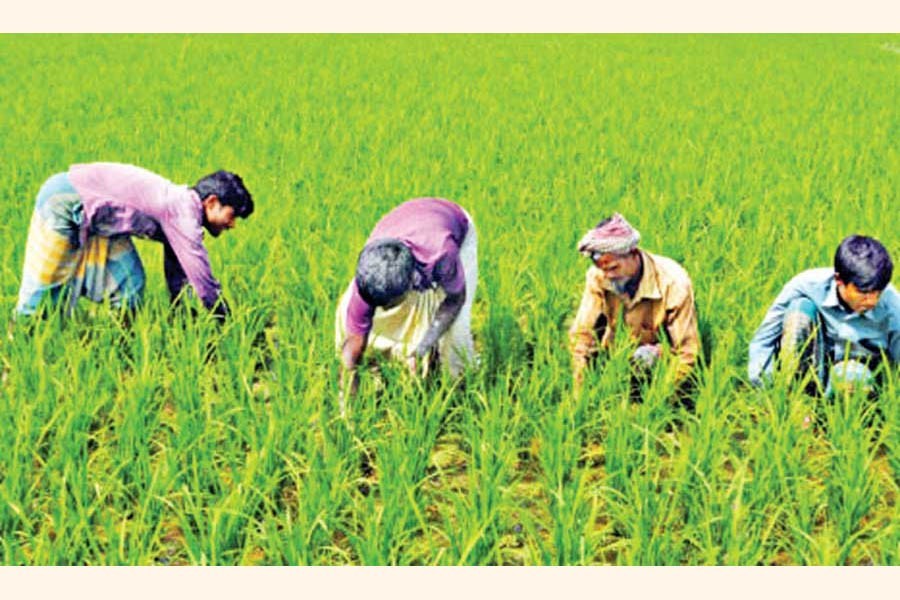The ongoing flood has dealt a severe blow to rice cultivation across the country in this season of Aman, the second largest contributor to domestic rice supply.
The lingering flood might lead to a sharp fall in rice production, which, in turn, may push up the prices of the key staple further, insiders said.
The rice prices have already registered an increase of 5.5 to 9.0 per cent in the last two weeks in the city, according to the Trading Corporation of Bangladesh (TCB).
Coarse rice was selling at Tk 42-48 a kg, medium quality rice at Tk 50-55 and the finer one at Tk 58-70 a kg on Friday in the city, according to market sources.
The floods caused damage to standing crops and seedbeds, delay in plantation and shortage of seedlings, badly affecting Aman cultivation in 35 districts, said Golam Sarowar, finance secretary of the Bangladesh Agricultural Farm Labour Federation.
July and August are the peak period for farmers to transplant Aman seedlings, but lands in several key rice-growing hubs are still under waist-deep water, he said, adding that seedbeds couldn't be prepared in those areas.
Croplands in Rangpur, Lalmonirhat, Gaibandha, Kurigram, Jamalpur, Bogura, Sirajganj, Tangail, Faridpur, Netrakona, Sunamganj, Sylhet districts still remained inundated, he said.
He also said majority of the farmers couldn't even prepare seedbeds in districts like Jamalpur and Sirajganj.
And there was no sign of floodwater receding before the end of this month, which means the Aman farming would be affected severely this year, he added.
According to the official data, standing Aman crops on about 71,000 hectares of land have so far been damaged by the flood. And about 8,000 hectares in 33 districts went under water, resulting in severe shortage of seedlings.
The Department of Agricultural Extension (DAE) officials said they set a target to produce 15.6 million tonnes of rice on 5.89 million hectares of land in this Aman season.
According to the DAE, farmers brought 57 per cent of the targeted land under Aman farming until August 13, up by 61 per cent from the corresponding period of last year.
The rice production was 15.5 million tonnes in the Aman season in the last fiscal year (FY '20), according to the DAE.
DAE deputy director (monitoring and evaluation) Mizanur Rahman, however, expressed the hope that there was still some time for the Aman cultivation as it could be carried out until September.
The DAE started growing seedlings on highlands of the flooded districts to help affected farmers, he added.
Water levels in the coastal areas as well as in the Ganges basin swelled due to heavy downpour.


